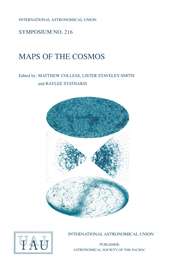No CrossRef data available.
Article contents
Evolution of Globular Clusters by Tidally-Captured Binaries through Core Collapse
Published online by Cambridge University Press: 19 July 2016
Extract
We present calculations of globular cluster evolution performed by a modified Fokker-Planck approach, in which binaries formed by tidal capture are followed explicitly, along with subsequent heating mechanisms. The cluster is simulated by a two component model, using the cross sections of Press and Teukolsky (1977) for tidal capture, those of Hut (1984) for the single-binary encounters and for distant binary-binary encounters, and those of Mikkola (1983) for the strong binary-binary encounters. The initial state of the cluster is a Plummer model with N = 3 × 105 and scale radius r o = 1.13 pc. All stars are identical, with mass M ∗ = 0.7M ⊙ and R ∗ = 0.57R ⊙. This gives an initial core radius rc = 0.8 pc, and one-dimensional dispersion σ = 11.6 km s-1. All binaries are assumed to be identical, with separation a = 2.5R ∗. There are no binaries in the cluster initially. Additional important effects, such as tidal truncation, tidal shocks, stellar evolution and mass loss, and stellar mergers, are not included.
Information
- Type
- Chapter X. Poster Papers on Formation and Evolution of Globular Clusters
- Information
- Copyright
- Copyright © Kluwer 1988

